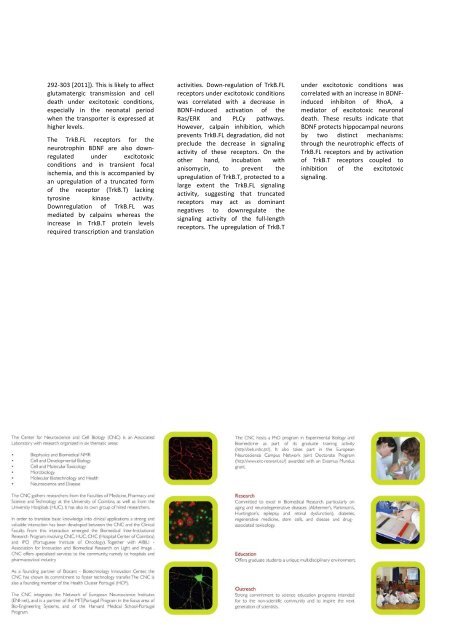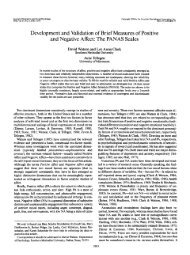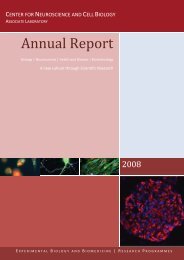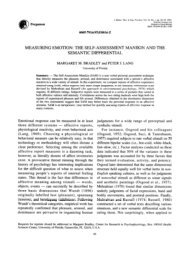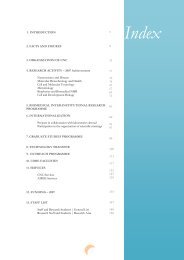- Page 1: Center for Neuroscience and Cell Bi
- Page 5: Introduction |General Objectives5CN
- Page 9 and 10: OrganizationThe Center for Neurosci
- Page 11 and 12: Neuroscience and Disease AreaCoordi
- Page 13: Mitochondrial Dysfunction and Si
- Page 16 and 17: Glutamatergic Synapses GroupHead: A
- Page 18 and 19: Neuroprotection and Neurogenesis in
- Page 22 and 23: Mitochondrial Dysfunction and Signa
- Page 24 and 25: Molecular Mechanisms of Disease Gro
- Page 26 and 27: 26fluoxetine promotes the prolif
- Page 28 and 29: 28Project 3: B cells against C
- Page 30 and 31: Finley, L.W., Carracedo, A., Le
- Page 32 and 33: Santos, S.D., Iuliano, O., Ribe
- Page 34 and 35: Molecular Biotechnology Group Vec
- Page 37 and 38: Molecular Biotechnology GroupHead:
- Page 39 and 40: Molecular Systems Biology GroupHead
- Page 41 and 42: Structural and Computational Biolog
- Page 43 and 44: Vectors and Gene Therapy GroupHead:
- Page 45 and 46: Biomaterials and Stem Cell-Based Th
- Page 47 and 48: Pharmacometrics GroupHead: Amílcar
- Page 49 and 50: 4919 (from retinal pigment epit
- Page 51 and 52: Khadem, M., Camacho, R., Nóbre
- Page 53: IN PRESS Correia, S., Vinhas, R
- Page 56 and 57: Mitochondrial Toxicology and Dis
- Page 58 and 59: Redox Biology in Health and Disease
- Page 60 and 61: (2011) Changes in glucose uptak
- Page 62 and 63: 6223. Duarte, F.V., Teodoro, J.S
- Page 64 and 65: Microbiology of Extreme Environm
- Page 66 and 67: Medical Mycology - Yeast Research G
- Page 68 and 69: IN PRESS Anjos, J., Fernandes,
- Page 70 and 71:
Inorganic Biochemistry and Molec
- Page 72 and 73:
72Main Achievements A) New Gd(II
- Page 74 and 75:
appearance. Insulin and c-‐p
- Page 76 and 77:
IN PRESS Barosa, C., Silva, C.,
- Page 78 and 79:
78Cellular Immunology and Oncobi
- Page 80 and 81:
inhibiting TNF-‐α and CCL5
- Page 82 and 83:
Infection, Phagocytosis and Pathoge
- Page 84 and 85:
84metabolism as well as on gen
- Page 86 and 87:
Ramalho-‐Santos, J. (2011) H
- Page 88 and 89:
1. Psychiatry Research Carlos Pa
- Page 90 and 91:
Fanous, A.H., Middleton, F., Ge
- Page 92 and 93:
PUBLICATIONS Santos, M.J., Marque
- Page 94 and 95:
Andrade, P., Gonçalo, M. (2011
- Page 96 and 97:
PUBLICATIONS Costa, A.L., Silva,
- Page 99 and 100:
InternationalizationInternationaliz
- Page 101 and 102:
Role of difusible and contact
- Page 103 and 104:
Retroviral-‐like membrane-
- Page 105 and 106:
Harvard Medical School), Mª Ot
- Page 107 and 108:
5 th Annual Meeting on Cell Sig
- Page 109 and 110:
Graduate Studies ProgrammeThe Cent
- Page 111 and 112:
Excitotoxic Signaling October 19
- Page 113 and 114:
FEBRUARY 3.2.2011 Peripheral nervo
- Page 115 and 116:
11.11.2011 Keeping mitochondria i
- Page 117 and 118:
Ana Raquel Santos Calhôa Mano
- Page 119 and 120:
Paula Cristina Cardoso Ramos Mo
- Page 121 and 122:
Master thesis Ana Isabel Reis S
- Page 123 and 124:
Marta Maria Vieira Matutino Fal
- Page 125 and 126:
Outreach ProgrammeThe Outreach Pr
- Page 127 and 128:
Technology TransferTranslational r
- Page 129 and 130:
Core FacilitiesCNC research Core
- Page 131 and 132:
FLOW CYTOMETRY UNITHead of Unit: Is
- Page 133 and 134:
MASS SPECTROSCOPY UNITHead of Unit:
- Page 135 and 136:
ServicesCNC Laboratório Associad
- Page 137 and 138:
137Mitochondrial DNA (mtDNA) and
- Page 139 and 140:
Neuro-Ophthalmology Genetics Labora
- Page 141 and 142:
AIBILI Report of Activities2011141
- Page 143 and 144:
1433 genes will be analysed by
- Page 145 and 146:
8. A multicenter, masked, random
- Page 147 and 148:
147decarboxylase inhibitor (DDCI)
- Page 149 and 150:
4. Publications (2011) 1. Alves
- Page 151 and 152:
46. Ribeiro ML, Figueira J, Cun
- Page 153 and 154:
153Funding
- Page 155 and 156:
Introduction In 2011 funding of
- Page 157 and 158:
ONGOING PROJECTSTitle Financing A
- Page 159 and 160:
“A restrição calórica aumen
- Page 161 and 162:
"Planctomyces -‐ uma linhage
- Page 163 and 164:
“A enigmática maltocinase de
- Page 165 and 166:
“Perfis dinâmicos do óxido
- Page 167 and 168:
“Mecanismos Moleculares do Trá
- Page 169 and 170:
QREN-‐Amilotera: 021622 Agênc
- Page 171 and 172:
171List of Staff and Research Stude
- Page 173 and 174:
List of Staff and Research Students
- Page 175 and 176:
Mª Carmen Alpoim (Associate Prof.,
- Page 177 and 178:
Manuella Kaster 30Marco André Coel
- Page 179 and 180:
Diana Dinis Azenha 100Diana Jurado
- Page 181 and 182:
Miranda Melle 100Nélio Gonçalves
- Page 183 and 184:
Diana Matias 100Dina Farinha 100Dio
- Page 185 and 186:
MDAntónio MacedoCollaboratorCristi
- Page 187 and 188:
Research Staff and Students | Resea
- Page 189 and 190:
Carla Maria Nunes Lopes 100Carlos A
- Page 191 and 192:
Grant TechnicianBruno Carreira 100C
- Page 193 and 194:
Post-Doc MembersAkhilesh Rai 10Ana
- Page 195 and 196:
MSc StudentsAlbert Rafels Ybern 30A
- Page 197 and 198:
Diana Jurado S. Serra 100Filipa Lib
- Page 199 and 200:
Grant TechnicianAlexandra M. Abrunh
- Page 201 and 202:
MSc StudentsAdriana Branco 100Andre
- Page 203 and 204:
Paula Mota 100Sandra Catarina G. Am
- Page 205 and 206:
205


